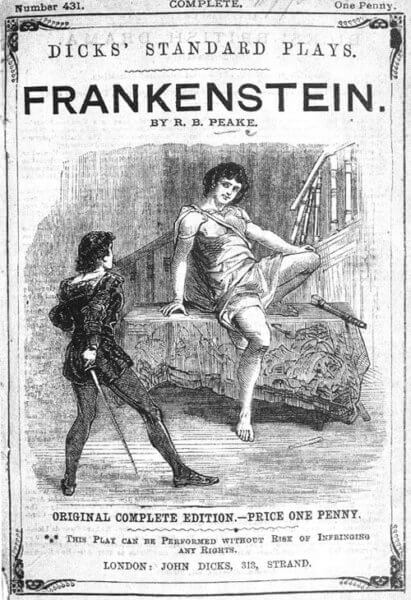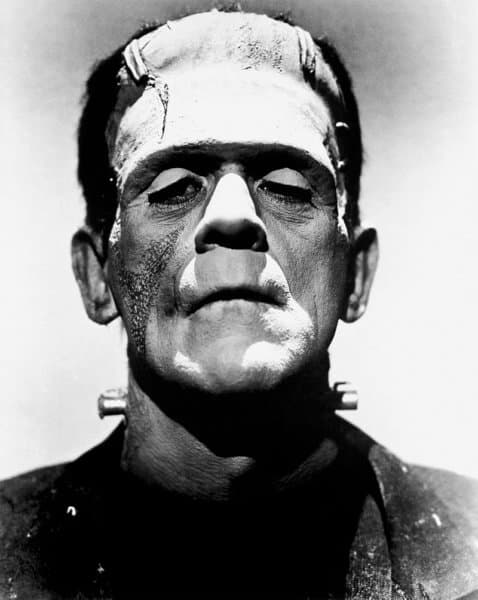Classic monsters like Dracula, Frankenstein’s monster, the mummy, the invisible man, the wolf man, and the creature from the Black Lagoon paved the path for modern horror marvels. Turning terror mainstream, these familiar faces of fear demonstrated that horror has a home in motion pictures.
Several of these favored fright feasts began life a literary horror. Authors like Brahm Stoker, Mary Shelley, and H.G. Wells. Others rose from the grave as original nightmares created specifically for Universal Pictures.
Horror-ific History
Universal Studios, in 1923, took a gamble with their production of “The Hunchback of Notre Dame” (1922). “Hunchback,” which did better than other film Universal released that year, catapulted Lon Chaney into the spotlight, due the brilliant star’s passion for perfect make-up (which he did himself). To showcase Cheney’s talents, Gaston Leroux’s “Le Fantome de l’opera” novel became the studios next feature. “Phantom of the Opera,” released in 1925, also gave birth to the horror genre of fear fed films.

It’s Alive!
Mary Shelly’s infamous man-made monster nightmare, “Frankenstein; or, the Modern Prometheus,” first horrified readers on New Year’s Day in 1818. Shelly began writing her monstrous tale at age 18! Though it was first published (London edition, 1818) anonymously, five years later the French version revealed her as the gothic horror/science fiction story’s author.

“Frankenstein” found fearsome fame as the result of competition (to determine who could create the best horror story) between Mary, Percy Shelley, and Lord Byron during the summer of 1816. After posing the possibility of reanimating a corpse, Mary Shelley imagined the horrors of her famous novel during a waking nightmare that evening.

Shelley modernized her novel, combining the traditional three volume story-telling style of the 1800’s and embellishing elements of her horror story. On Halloween, in 1823 the current version of Frankenstein’s misfortune was released as a single volume edition.
Two Centuries of Terror
For 200 years Doctor Frankenstein’s creature terrorized audiences in the form of stage plays, motion pictures, and television adaptations. 1823’s English Opera House hosted the first theatrical performance: “Presumption; or, the Fate of Frankenstein.” An 1887 variation, “Frankenstein, or The Vampire’s Victim” brought the creature into a musical burlesque show.

Edison Studios cast Charles Ogle as the first film version of the creature in its 1910 “Frankenstein” Kinetogram. This 16-minute monster movie took less than a week to film at Edison’s Bronx, New York studio. Now in the public domain, fear fans can view this historic horror by surfing over to sites like Halloween Flix.

Perhaps the most memorable monster manifestation of the creature, Universal Studios’ 1931 “Frankenstein,” showcases Jack Pierce’s macabre masterpiece of make-up magic worked upon Boris Karloff (as the monster).

Classic Monster Movie Magic
After the success of the studio’s February 1931 fear film, “Dracula,” Carl Laemmle Jr revealed more Universal monster movies would soon follow. Lugosi was even the first choice for Frankenstein’s monster, but make-up tests didn’t go well and he abandoned the role. Lugosi would take up the monster’s mantle, though, for its fifth sequel.

“Frankenstein” found life in theaters on December 4, 1931, thrusting Boris Karloff into the spotlight, as Frankenstein’s reanimated creature. Universal saw lightning strike twice, as the fear film found favor with fans. By 1943, “Frankenstein” earned the studio over $700,000; by 1953, including several sequels, Shelley’s creature captured a whopping $13 million profit.
In addition to thrusting Boris Karloff into the realm of legendary monsters, “Frankenstein” starred Colin Cove (Henry Frankenstein), Mae Clarke (Elizabeth), Frederick Kerr (Baron Frankenstein), John Boles (Victor Moritz), Edward Van Sloan (Dr. Waldman), Dwight Frye (Fritz, not Igor, the Doctor’s assistant), Lionel Belmore (Burgomaster Herr Vogel), Marilyn Harris (little girl/Maria), and Michel Mark (Maria’s father Ludwig).

Sinister Sequels
Seven more scream screen stories saw the creature’s return. Three solo sequels featured the monster in his own story and three “rally” films (multiple monsters) were made. In addition, a classic comedy cast the creature as a robot.

Elsa Lanchester joined the realm of memorable monsters when she was transformed into the creature’s mate in 1935’s “Bride of Frankenstein.” Though easily recognized as one of Universal’s classic monsters, the Bride enjoys a significantly short amount of screen time, appearing near the end of this sequel. This first sequel also brought a much needed superb score, cleverly crafted by Franz Waxman and gave the monster a voice.
Boris Karloff performed his final portrayal of the monster for the 1939 “Son of Frankenstein” follow up film. Basil Rathbone became Baron Wolf von Frankenstein. Infamous and faithful fiendish assistant, Ygor (Bela Lugosi) made his first film appearance.
“The Ghost of Frankenstein” (1942) cast Lon Chaney Jr. as the monster. Lugosi resumed his role as Ygor for this third sequel.
Serving as a sequel for both “Frankenstein” and “The Wolf Man” (1941), “Frankenstein meets the Wolfman” added Lon Chaney Jr to the cast in 1943.
“House of Frankenstein” (1944) and “House of Dracula” (1945) dug up Dracula (John Carradine) and saw the return of the Wolf-Man (Lon Cheney Jr.). Karloff also returns, but not as the monster.
Another Classic Monster era film featured the creature as a robot instead of a reanimated corpse (“Abbot and Costello Meet Frankenstein” – 1948)
Universal would revise their man-made monster in 1964 for three seasons of television comedy, “The Munsters;” subtly showing that the real monsters are human beings.
Final Words
Mary Shelley’s 1818 Gothic, science-fiction horror continues to delight and inspire fans 200 years after its (and the creature’s) creation. Scores of screen treasures owe their existence to Shelley’s novel. The 1974 Mel Brooks’ comedy, “Young Frankenstein” (which pays homage to the 1931 Universal film in several scenes), and Tim Burton’s stop-motion Disney family film, “Frankenweenie,” are perfect examples.

Theme park tributes to Classic Monsters can be found Universal Studios Florida. There, Universal Studios’ Classic Monsters Cafe curates a creepy cool collection of monster-themed treasures (including several of the largest Basil Gogos prints ever created).

Haunting hordes of classic monster collectibles, including movie sets, action figures, tiki mugs, graphic novels, and spooky special edition magazines celebrate the bicentennial of this man-made monster.

Special thanks to artist Nathan of Luna Moon Gothic for lending the watercolor creations which make up the cover image for this spooky series. Check out their store on Etsy to dig up your own copy of this wickedly wonderful artwork (and discover other fiendishly fun finds).

Read more about Universal Studios Classic Monsters:
Universal Studios Classic Monsters: Designing Dracula
Universal Studios Classic Monsters: Unwrapping “The Mummy”
Universal Studios Classic Monsters: The Wolf Man
Universal Studios Classic Monsters: the Creature from the Black Lagoon
Source and images: Wikipedia (novel, Universal franchise), Luna Moon Gothic
